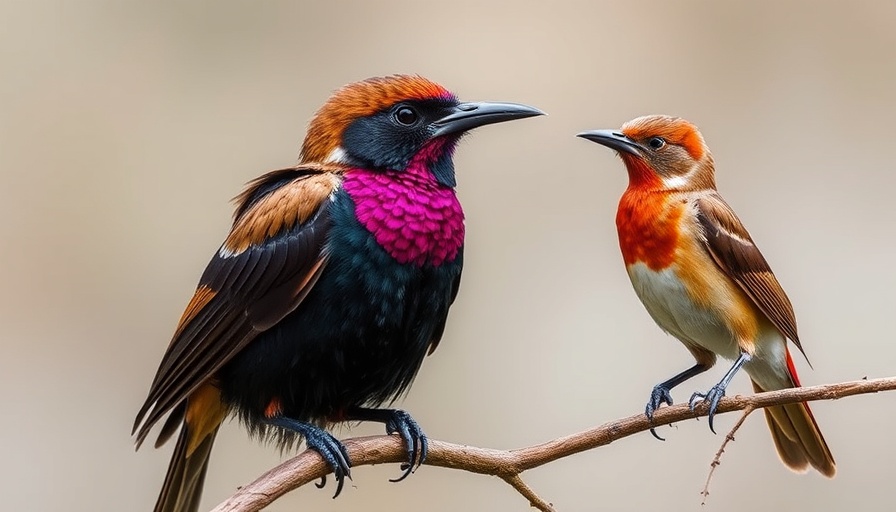
Exploring Biomimicry: Lessons from the Birds
In the fascinating world of biomimicry, the connection between nature and innovation is both profound and inspiring. The latest episode of the BirdNote podcast, "Biomimicry, Birds and Beyond," introduces listeners to the concept through the lens of birds, as discussed by astrobiofuturist Billy Almon and renowned writer and activist adrienne maree brown. This innovative approach draws parallels between biological designs and technological advancements, creating a bridge that has the potential to inspire sustainable solutions in various fields.
Understanding Biomimicry and Its Historical Context
Historically, biomimicry represents humanity's inclination to learn from nature. From building structures that mimic birds’ nests to designing materials inspired by feathers, this practice has ancient roots and modern applications. Almon emphasizes how this ancient process has fostered innovative thinking within technology sectors, revitalizing interest in eco-conscious designs that not only cater to modern challenges but also honor environmental integrity.
Fractals and Natural Patterns: A Deeper Look
A key concept discussed is the role of fractals in understanding natural phenomena. Adrienne maree brown elaborates on how the patterns found in nature can guide individuals through significant life changes, encouraging listeners to apply these lessons for personal growth. Fractals serve as an example of how intricate designs in nature can offer solutions to complex societal issues, a perspective that aligns well with both ecological and social justice movements.
Birdsong as a Metaphor for Inspiration and Action
The beauty of birdsong serves not only as a backdrop to nature but also as a metaphor for creativity and inspiration. Just as a bird’s melody can evoke emotions and spur artistic expression, so can the principles of biomimicry encourage new ideas across various platforms. This intersection of nature and creativity emphasizes the importance of fostering a deeper connection with the environment.
Why Engaging with Nature Matters Now More Than Ever
The increasing challenges posed by climate change and environmental degradation make this exploration of biomimicry particularly relevant. By drawing lessons from nature, society stands to gain much more than just technological advancements; it can foster a mindset shift towards sustainability. The insights provided by Almon and brown evoke a sense of urgency and importance in reshaping our relationship with the environment.
For those interested in the intersection of science, creativity, and environmental activism, the discussion on biomimicry is vital. It highlights how understanding and valuing nature not only paves the way for innovation but also nurtures our mental and emotional well-being.
 Add Row
Add Row  Add
Add 




Write A Comment